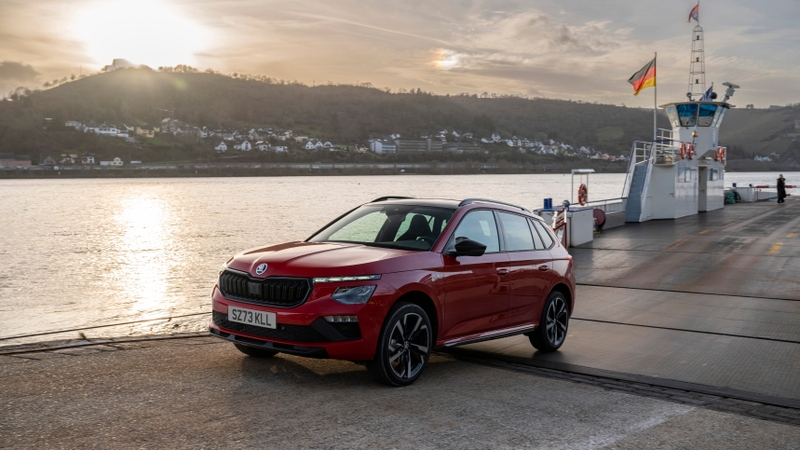
Dacia Duster engines, driving and performance
Gallery
How does the Dacia Duster drive?
Take a look at the Dacia Duster’s 4x4 styling and you might think the car will be decent off-road but hopeless on it. Well, four-wheel drive is available with the diesel engine and the Duster is decent off-road, but it’s also pleasantly capable on asphalt. Which is ideal, seeing as most Dusters are staunchly front-driven only.
The Duster looks like a road-crushing SUV but it weighs barely more than a Ford Fiesta, so it’s more agile than you might expect and could almost be described as ‘fun to drive’ down a country lane. Add in a snicky manual gearshift and the Duster is actually quite satisfying behind the wheel. The steering is light and numb, though.
There’s a fair bit of body roll, reminding you not to go over the top. Keep a relaxed pace and the Duster is a good companion.
Is the Dacia Duster comfortable?
The Duster isn’t the most comfortable SUV on the road, but it’s good enough in most situations and over most road surfaces. It deals with big bumps quite well and shouldn't leave you wincing if you hit a pothole. Over neglected stretches of road it gets quite busy and doesn’t settle into a rhythm, however.
While the Duster deals with bumps better than some premium cars, its inexpensive price is highlighted by the noise at speed. It’s not deafening, but the Duster’s soundproofing clearly isn’t as generous as costlier rivals. You might notice a bit of vibration at times, too.
What’s the best engine to get?
We’d recommend the 1.3-litre TCe petrol engine to buyers who’ll drive on faster roads fairly regularly. With outputs of 130hp or 150hp, it’s powerful enough to get the Duster up to speed and offers respectable motorway performance. After all, if this engine’s good enough for the Mercedes A-Class, it’s good enough for the Dacia. Expect to see around 40mpg from this engine in the real world.
Below that is a 1.0-litre TCe engine with three cylinders and a grand total of 90hp. This is more than powerful enough around town but doesn’t have much to offer at higher speeds, so you might have to change down more than you’d like to accelerate on the motorway. It’ll manage a similar fuel economy figure to the 1.3 TCe, but should save you a bit in insurance costs.

The same is true of the old 1.6-litre SCe petrol, which used to kick off the range. It’s easily the most affordable option but takes its time to get up to speed, and typically isn’t quite as economical as the newer turbocharged petrols.
Used-car buyers can also find diesel-powered examples, featuring Renault’s dependable 1.5-litre dCi engine. We’d recommend this engine for buyers who often do long trips – where the 57mpg quoted fuel economy will keep fuel costs down – or to people eyeing up the Duster as a towcar. Four-wheel drive is available on the diesel engine, but rare.
As a more affordable alternative to a hybrid engine, the Duster offers a curious Bi-Fuel powertrain, letting the engine swap between petrol power and LPG (Liquefied Petroleum Gas). It might seem like a chore to have to fill up two tanks, but the result is a range of over 600 miles. LPG is considerably cheaper than petrol, so you’ll save yourself some cash if you run on gas for as much as possible. The Bi-Fuel Duster always needs to start on petrol power – to give the LPG system time to ‘warm up’, and it’s worth locating nearby LPG stations before you buy. Oh, and remember that you can’t go on the Channel Tunnel with an LPG-powered car.
You’ll almost certainly get a manual gearbox with your Duster, regardless of the engine you pick. As we write this, there are around 1,100 Dusters for sale nationwide, and only 3.5% come with an automatic gearbox. The Duster isn’t the best choice for sitting in traffic or if you have limited mobility, then.
Dacia Duster performance
No Duster is what you’d call fast, but the turbocharged TCe petrol engines offer the best performance. The range-topping 150hp engine nips under the 10-second 0-62mph threshold, with the 130hp version taking a still reasonable 11.1 seconds. The 150hp version feels unnecessary, though, so we’d go for the more widely available 130hp engine.
The smaller 1.0-litre TCe petrol is a bit more leisurely getting up to speed, but times of 12.5 seconds for the TCe 100 and 13.5 seconds for the TCe 90 aren’t drastically bad. You should be able to keep up with traffic in most situations without requiring all the engine’s power. Entry-level 1.6-litre SCe models are actually marginally quicker than both of these engines, although you might have to work the non-turbocharged SCe engine harder to make progress.
A little surprisingly, it’s the Bi-Fuel that’s the slowest in the range, taking a considerable 14.4 seconds to reach 62mph from a standstill. With 100hp to offer and the extra weight of another fuel tank – plus different engine tuning – the Bi-Fuel option isn’t the one to go for if performance is of any concern.

















































